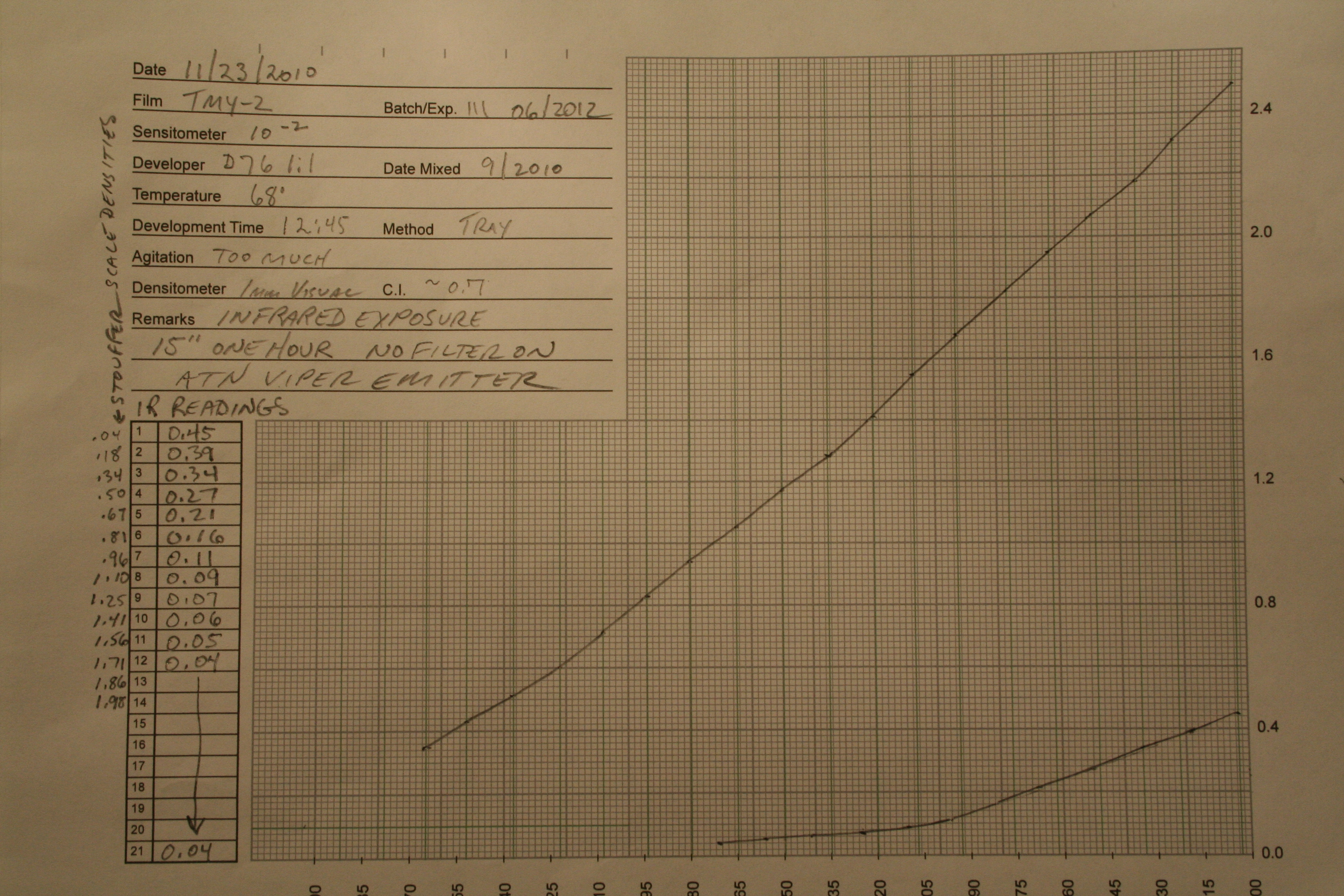I use an ATN Viper, and I did a fog test.
Here's what an ATN Viper does when aimed at a sheet of TMY-2 for an hour...
Now if you only work for 15 minutes... and if you further cut the light by two stops... This graph shows a theoretical worst-case result of possibly 0.04 of additional density versus working entirely in the dark. In practice, I have never detected any fog effect on my film that could be due to the infrared emitter. Despite using it much of the time, I always have the same low base + fog as when I work in total darkness.





 Reply With Quote
Reply With Quote



Bookmarks